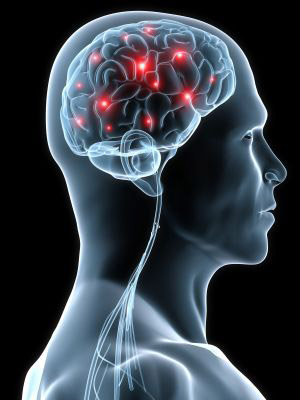 As part of our mission, we are committed to innovation and advancement of the field of Neurological Surgery to improve the care of our patients now and in the future. Our research program spans across important diseases that afflict our patients that we see each day. We have both translational and clinical research studies ongoing that are receiving regional, national and international attention. Our research programs are tightly coupled with the clinical interests of our faculty.
As part of our mission, we are committed to innovation and advancement of the field of Neurological Surgery to improve the care of our patients now and in the future. Our research program spans across important diseases that afflict our patients that we see each day. We have both translational and clinical research studies ongoing that are receiving regional, national and international attention. Our research programs are tightly coupled with the clinical interests of our faculty.
Our NIH-funded cerebrovascular research program aims to investigate mechanisms underlying cerebral aneurysm formation, progression and rupture with the ultimate goal of translating this knowledge to develop minimally or non-invasive therapies for our patients harboring these potentially devastating lesions. In the laboratory of Dr. Aaron Dumont, our team uses both in vitro and in vivomodels for this line of research.Read More
Using cultured cerebral vascular smooth muscle cells (SMC) from mice, rats and humans, we investigate the influence of inflammatory factors (such as TNF-a) that appear to play a critical role in the pathogenesis of cerebral aneurysms in humans. We have found that TNF-a appears induce changes in SMC that induce a pro-inflammatory, pro-matrix remodeling phenotype that subsequently contributes to vessel wall degradation, aneurysm formation, cell death and eventually aneurysm rupture. Using modern molecular biological tools, we have delineated molecular mechanisms underlying these observations that are consequently targeted in our in vivo experiments.
We employ two in vivo rodent models of aneurysm formation. The first model involves creating hemodynamic stress (through ligation of one carotid artery), inducing hypertension (through ligation of posterior branches of the renal arteries and increasing salt intake) and administering an inhibitor of collagen cross-linking. Spontaneous aneurysms form in a delayed fashion.
The second model involves the induction of hypertension (through nephrectomy and administration of deoxycorticosterone acetate (DOCA)) and stereotactic injection of elastase into the basal cisterns. Treated animals develop aneurysms that grow and rupture thereby allowing assessment of aneurysm formation, growth and rupture.
Exciting emerging data from our laboratory demonstrates that strategies targeting TNF-a appear to prevent aneurysm formation, growth and rupture.
"Our cerebrovascular research program is also investigating the mechanisms by which cigarette smoke contributes to aneurysm pathogenesis with the ultimate goal of also translating this to novel therapies for our patients."
Cigarette smoke is the most powerful modifiable risk factor contributing to cerebral aneurysm pathogenesis and also potently modulates genetic risk in those patients with genetic predisposition to aneurysm formation as demonstrated by the Familial Intracranial Aneurysm study.
Our cerebrovascular laboratory is also collecting aneurysm samples from brain aneurysm surgeries (discarded tissue after the aneurysm is clipped) to extend our investigations of brain aneurysms from cultured SMC and rodent models to human aneurysm tissue.
Our clinical research program is multifaceted and includes epidemiological research (on brain aneurysms, intracerebral hemorrhage, other forms of stroke and spine disorders), clinical trials of endovascular devices (for stroke and cerebrovascular disorders), medical and surgical therapies for stroke and spine disorders, and patient outcome-based research for patients with neurosurgical diseases.
Our Department encourages collaboration throughout our institution (for example, with strong relationships with the Department of Pharmacology and Physiology as well as with the School of Public Health and Tropical Medicine) as well as across the United States and internationally.
